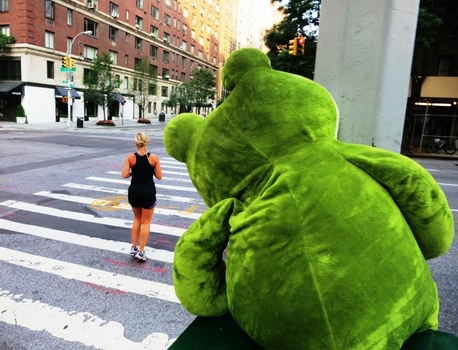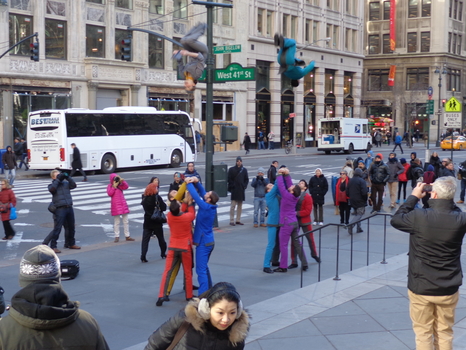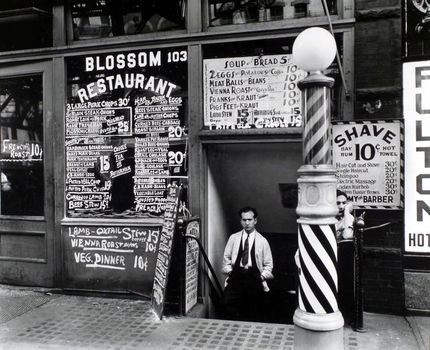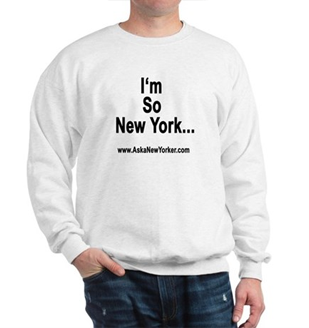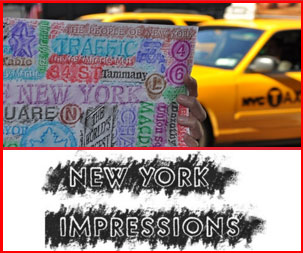As modern-day Americans, we’re all about convenience. We’re constantly striving to find ways to make it easier, get it faster, do it better. And nowhere is this more true than in New York City. After all, where else can you have your dog walked, your clothes cleaned, your dinner prepared, and your errands run, all without ever leaving the comfort of your apartment?
We tend to picture “the past” as a simpler time, when men in linen suits and ladies with parasols strolled jauntily along the avenues, unburdened and unaware of the pressures of modern city life. It’s a lovely notion, but one that couldn’t be further from the truth. New Yorkers of yesteryear were just as preoccupied with speed and accessibility as their contemporary counterparts, especially where shopping was concerned.
Between the Civil War and World War I, many of the city’s major department stores were located along the Ladies’ Mile, a swath of Broadway and Sixth Avenue that we now think of as Flatiron and Chelsea. Why did stores spring up along this route? The reason, at least in part, was convenience. Retailers wanted to make it as easy as possible for customers to see (and hopefully purchase) their products, so they chose store locations and architectural layouts that reflected this desire. Hugh O’Neill, owner of Hugh O’Neill Dry Goods on Sixth Avenue and 21st Street, built his blocklong store (now a luxury condominium) with atypically large windows, hoping to catch the attention of train riders as they went whizzing by on the Sixth Avenue El. Down the street at Siegel-Cooper & Company (the present-day home of Bed Bath & Beyond), proprietor Henry Siegel aimed to make his store so convenient that customers would never have to leave, providing them with an on-site bank, dentist’s office, restaurant, barber shop, and grocery store, among numerous other amenities. And next time you stop by BB&B for a blender or a new set of sheets, be sure to note the second-floor windows on the 18th Street side of the building, where a ramp once allowed elevated train passengers to cross directly from the platform to a store entrance on the second floor.
Further downtown, John Wanamaker also built his New York City flagship with customer convenience in mind. 770 Broadway was constructed as an annex to the original Wanamaker Department Store (then located one block to the north, and destroyed by fire in 1956), and Wanamaker created an easy shopping experience for his customers by allowing passage between the two buildings via a pedestrian walkway called the “Bridge of Progress,” as well as by underground walkway. More significantly, the building boasted doors which led directly into from the Astor Place subway station, the convenience of which became something of a selling point for the store:
“Have you ever realized that today you practically enter the Wanamaker Store here at your home station, many miles from the “heart of the Metropolis?” Step on the train, here and home, and you won’t need to go out-doors until you are back at your home station again. The train runs you into the Grand Central Station, which is directly connected with the Subway, and the Subway train sets you down in Wanamaker’s. You may come in a driving rainstorm and not get a drop of water at any point—no need to carry an umbrella or wear a raincoat. You may come on the hottest midsummer day and never, ever get out in the head. No bothering with muddy crossings; no jostling among hurrying street crowds; no danger from the rushing trolley cars, automobiles and carriages while getting to your destination. No hunting for the right car—no transferring on the street. You simply step from the railroad train almost directly into the Subway train, and you stepinto Wanamaker’s, from the Subway station, without going out-doors or climbing a step. It has revolutionized the convenience of shopping.”
—From the Meriden Morning Record, May 27, 1905
Pay a visit to the Astor Place K-Mart today and you’ll find the very same “Wanamaker station” entrance still very much in use, connecting 6 train riders to the bottom floor of the multi-level discount store. (Coincidentally, Manhattan’s other K-Mart at 34th Street and 7th Avenue also allows for underground access to the subway.) Gimbel’s on West 33rd Street employed a similar tactic, connecting their famous “bargain basement” to the Herald Square subway station, a still-operational entrance which now leads train riders to JC Penney in the Manhattan Mall. And uptown retailer Bloomingdale’s got in on the act in 1913, when the Lexington line was constructed underneath the building and the store began using the tag line “All Cars Transfer to Bloomingdale’s” in its advertising, highlighting the store’s convenience to on-the-go New Yorkers. Today, riders on the 4/5/6 and N/R/Q lines can visit the Men’s Store at Bloomingdale’s to pick up a cool tee shirt or a pair of jeans, all without ever having to go above ground.
Our predecessors might’ve been more concerned with dry goods than high-tech gadgets, but speed and accessibility were just as important to their everyday lives as they are to ours. So next time you’re caught without an umbrella and pop in to K-Mart to pick one up, or swing by JC Penney to grab a pair of gloves on a bitterly cold day, be sure to say a silent “thank you” to the New Yorkers of yesteryear, whose busy lives laid the groundwork for a city full of “modern” shopping conveniences that we take for granted today.


